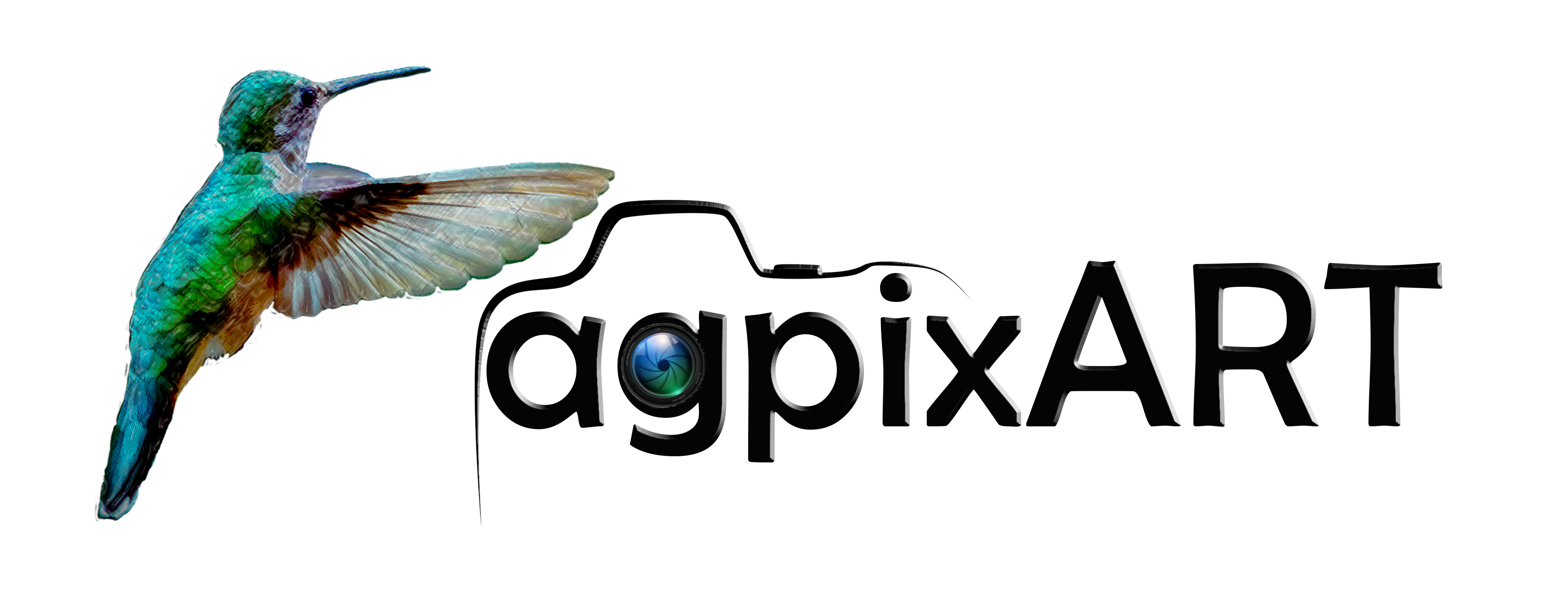Genovesa
Genovesa Island, a pristine, horseshoe-shaped gem in the northeastern Galápagos Archipelago, lies within the Galápagos National Park. It is renowned as a birdwatcher’s paradise, teeming with vibrant seabird colonies.
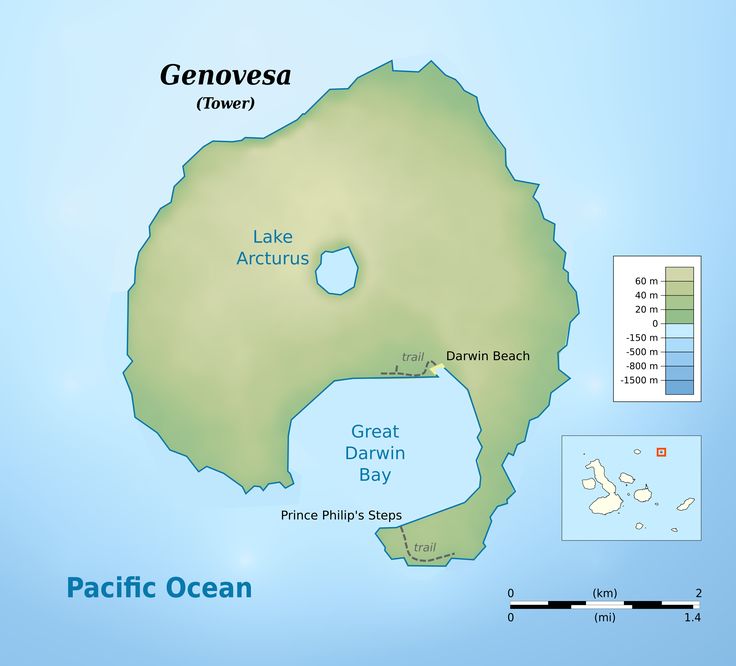
Explore Genovesa Island
Tower or Bird Island
Genovesa Island, sculpted by a collapsed shield volcano which forms the stunning Darwin Bay, spans roughly 14 km² with a peak elevation of 64 meters. Its captivating volcanic terrain, highlighted by the saltwater-filled Lake Arcturus crater, weaves geological wonder into a landscape where sparse palo santo, mangroves, and lava cacti sustain a thriving bird-dominated ecosystem.
Key species include over 200,000 red-footed boobies (the largest colony in the Galápagos), frigatebirds, Nazca boobies, swallow-tailed gulls (the world’s only nocturnal gull), storm petrels, red-billed tropicbirds, Galapagos doves, and Darwin’s finches. The short-eared owl, which hunts diurnally here, is a highlight, often preying on storm petrels. Marine life includes small marine iguanas (the smallest in the archipelago), fur seals, sea lions, hammerhead sharks, and manta rays.
Genovesa offers two main visitor sites: Darwin Bay, with a white sand coral beach, a 1.5 km trail through mangroves and tidal pools, and excellent snorkeling with colorful reef fish and sharks, and Prince Philip’s Steps (El Barranco), a steep climb to a plateau with a 2 km trail through palo santo forests and lava fields, ideal for spotting nesting birds and owls.
Good To Know…

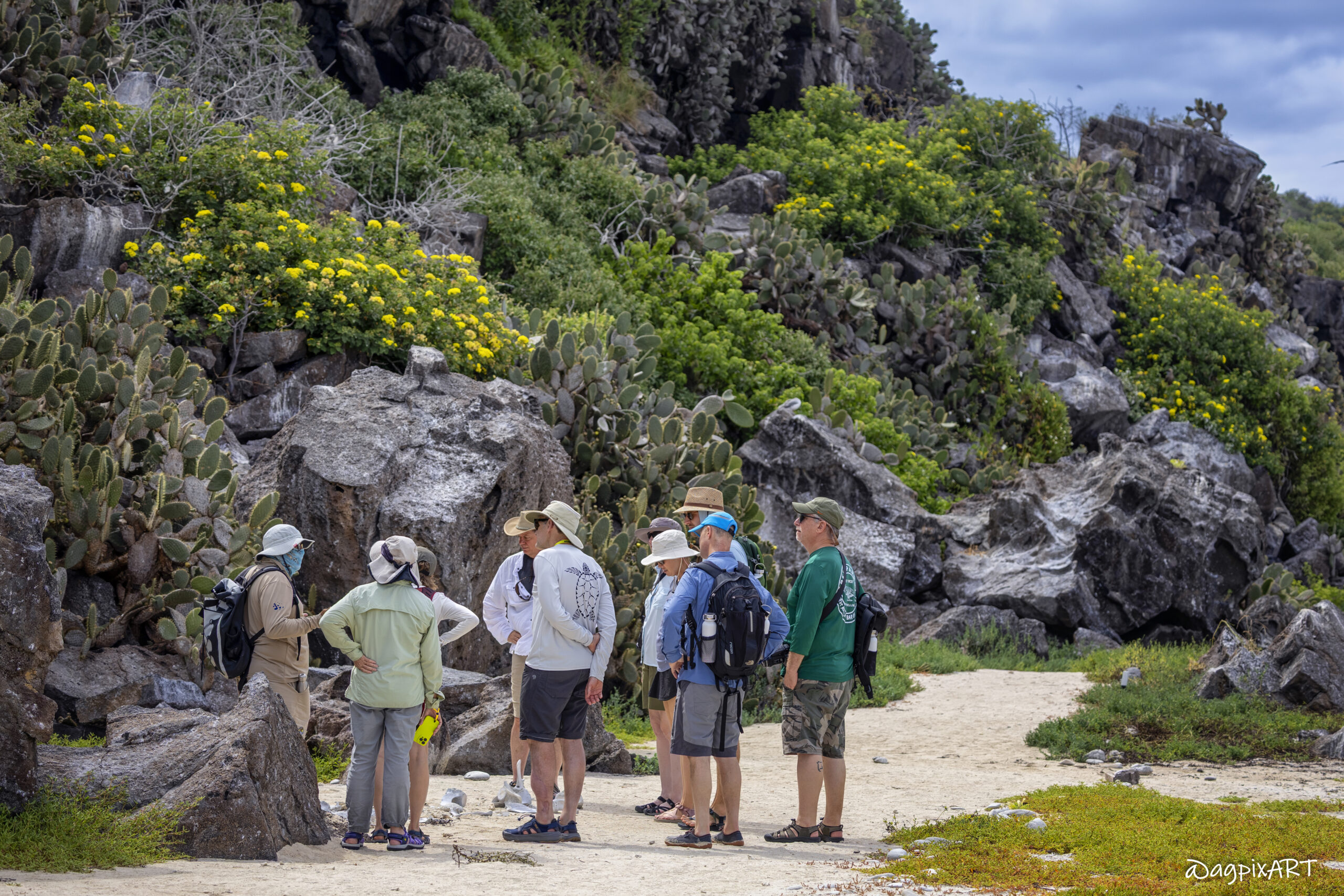
Birds-to-See
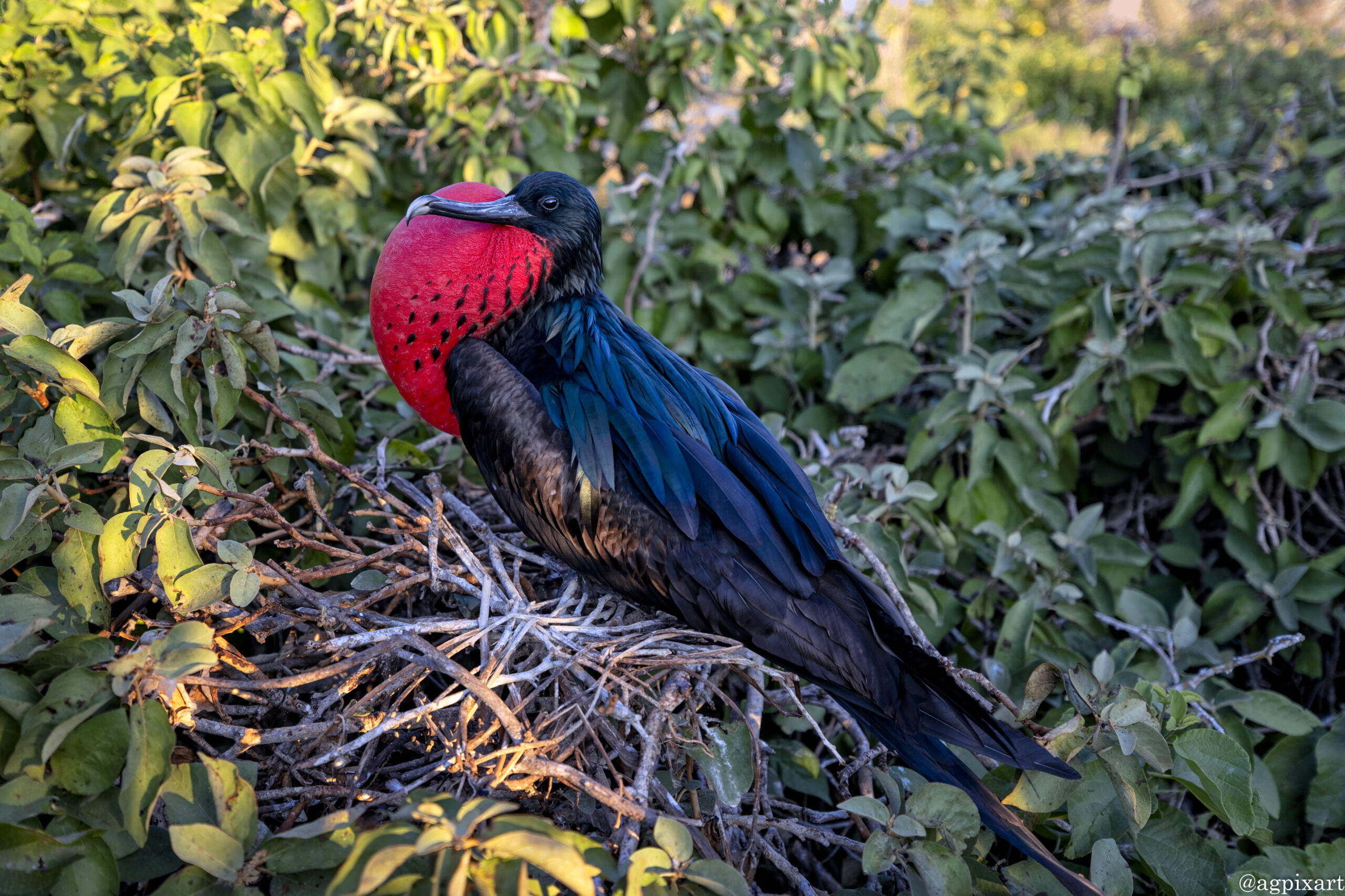
Frigatebirds
The Great Frigatebird (Fregata minor) and the Magnificent Frigatebird (Fregata magnificens), with the latter an endemic subspecies.
Great Frigatebird: Slightly smaller, males have black plumage with a green sheen on scapular feathers and a red gular sac (throat pouch). Females are larger with a white throat and breast, and a red or pink eye-ring. Juveniles have a rust-tinged white face, head, and throat.
Magnificent Frigatebird: The largest frigatebird species, males have black plumage with a purple sheen and a red gular sac. Females have a white breast, black throat, and a blue eye-ring. Juveniles have a white head and breast.
Male frigatebirds inflate their bright red throat pouches (gular sacs) into balloon-like displays to attract mates.
They are known as “pirates of the sea” for their kleptoparasitism, stealing food (fish, squid) from other seabirds like boobies. Their feathers lack waterproofing, so they skim food from the water’s surface without diving.
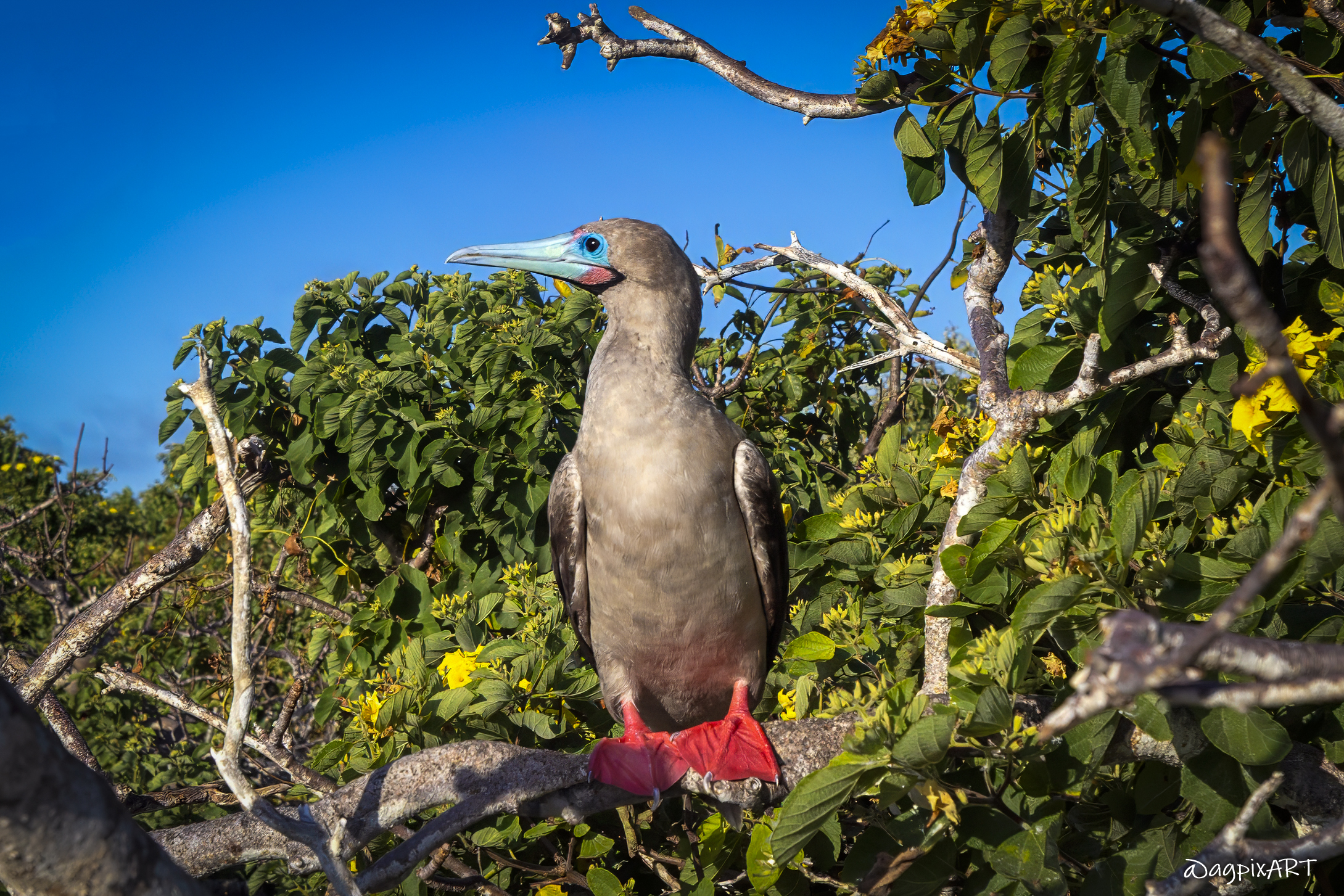
Red-Footed Boobies
Boobies get their name from the Spanish word “bobo,” meaning “clown” or “fool,” due to their comically clumsy waddle on land.
Over 200,000 Red-footed Boobies (Sula sula) nest on Genovesa, the largest colony in the Galápagos, identifiable by their bright red feet and blue beaks with pinkish facial skin.
They are the most polymorphic (variations in color) of the Galápagos boobies, coming in brown, white, or white-tailed brown morphs with the brown morph dominating on Genovesa.
They build stick nests in trees or shrubs, like mangroves or palo santo, unlike ground-nesting boobies. Their chicks are born covered in dense white down, looking like fluffy snowballs. They take about 3 months to fledge and 5 months to make long flights, relying on parents for foraging.
Young Red-footed Boobies do not have bright red feet like adults. Instead, their feet are typically dull grayish or pale pinkish in color. The vibrant red hue develops as they mature.
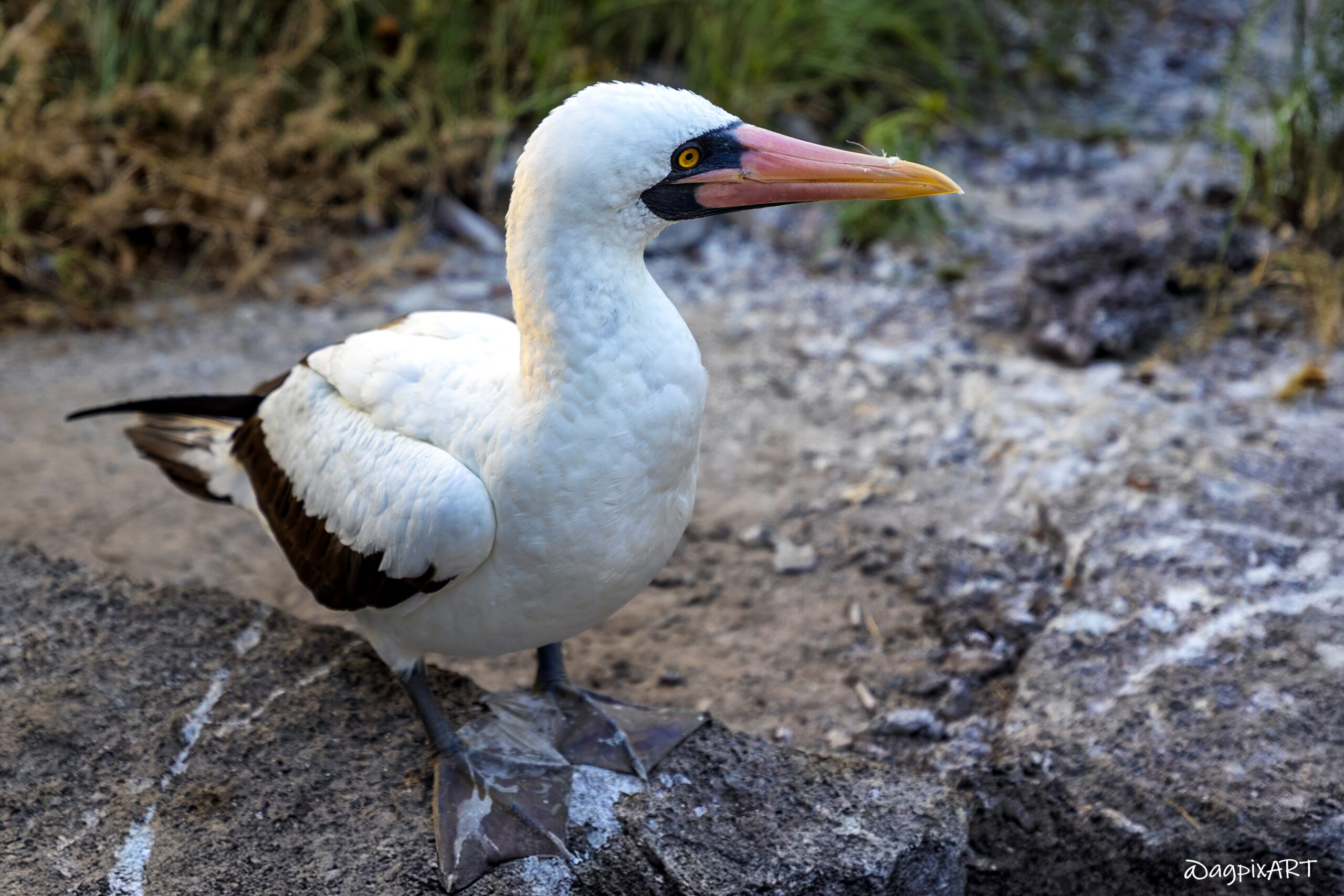
Nazca Boobies
(Sula granti) are large seabirds with a streamlined white body with black markings on the wings, tail, and around the eyes (forming a mask-like appearance). Their feet are grayish with males and females similar in appearance, but males slightly smaller. Juveniles are duller with less distinct markings. Adult males beaks are typically a dull yellowish or pale orange color, often with a grayish or bluish base. Females’ beaks are similar but tend to be slightly more vibrant, ranging from yellow-orange to a brighter orange hue. Juveniles’ beaks are duller, often grayish or pale yellow, and lack the brighter tones of adults.
They are skilled divers, plunging from heights of up to 100 feet (30 meters) into the ocean to catch fish and squid.
They lay 1–2 eggs on bare ground, but if two eggs are laid, siblicide often occurs, where the stronger chick pushes the weaker one out of the nest, ensuring only one survives. This is a distinctive trait of Nazca Boobies.
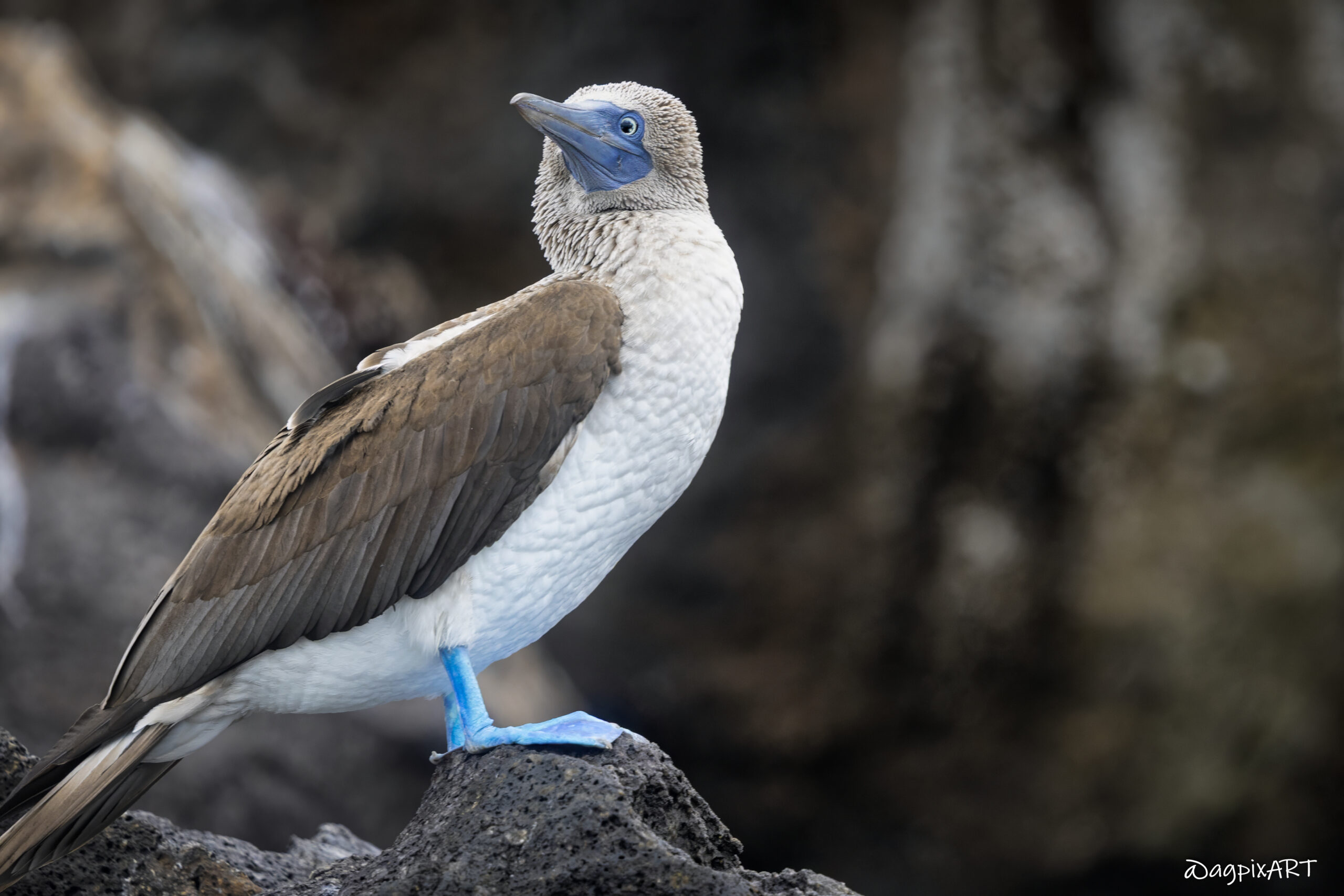
Blue-Footed Boobies
Blue-footed Boobies (Sula nebouxii) are iconic Galápagos seabirds, but they are less common on Genovesa Island compared to Nazca and Red-footed Boobies as they don’t typically nest here.
They are more likely to be seen foraging offshore in the surrounding waters or resting briefly on cliffs.
They are easily recognized by their bright turquoise or blue feet, which are more vibrant in healthy, breeding adults. Males typically have brighter feet, while females have slightly duller ones. They have a white body with brown wings, a grayish-blue beak, and a distinctive brown patch on the chest. Juveniles have duller, grayish feet and mottled plumage.

Galapagos Doves
(Zenaida galapagoensis), also known as Galápagos Ground Doves, are small, endemic birds found across the Galápagos. They have a reddish-brown or grayish-brown body, with darker wing markings and a short, square tail. Notable features include a bright blue eye-ring and a pinkish throat that shimmers in sunlight. Their beaks are short and slightly curved, ideal for their diet. Males and females look similar, but males may have slightly brighter colors. Juveniles are duller, with less pronounced eye-rings.
They are ground-foragers, feeding primarily on seeds, small fruits, insects, and occasionally nectar from cacti or other plants.
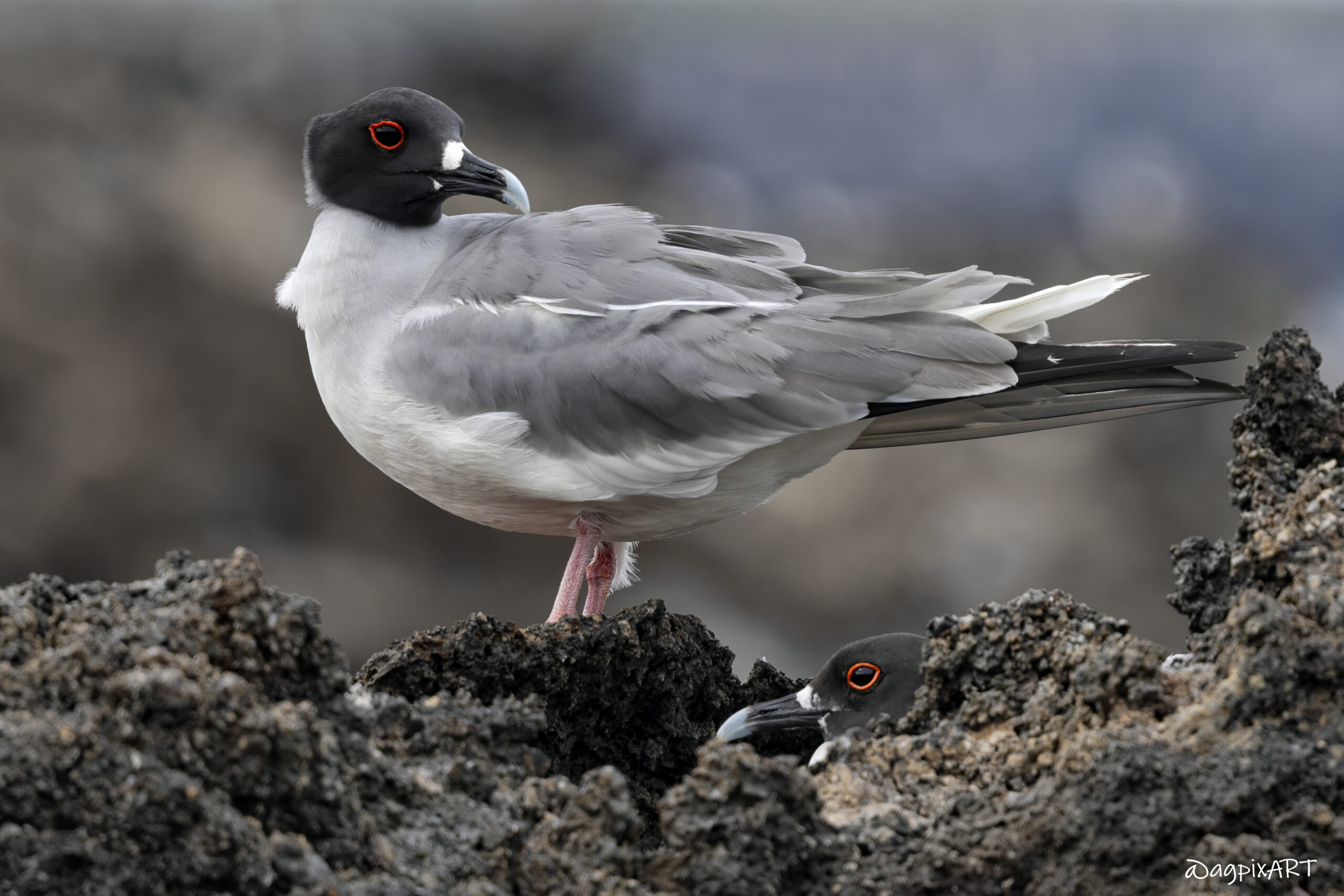
Swallow-Tailed Gulls
(Creagrus furcatus), an endemic seabird of the Galápagos Archipelago is the world’s only nocturnal gull, with a distinctive black head and a red eye-ring during breeding season, which fades to a white head with a black eye spot in the non-breeding season. The body is white with grayish wings and black wingtips. Their beak is black with a white tip, and their legs are reddish. As nocturnal feeders, Swallow-tailed Gulls forage at night, using their keen night vision to catch squid and small fish (e.g., sardines, clupeids) that rise to the ocean’s surface. They perform shallow dives or skim the water, unlike the deep plunge-dives of Boobies.
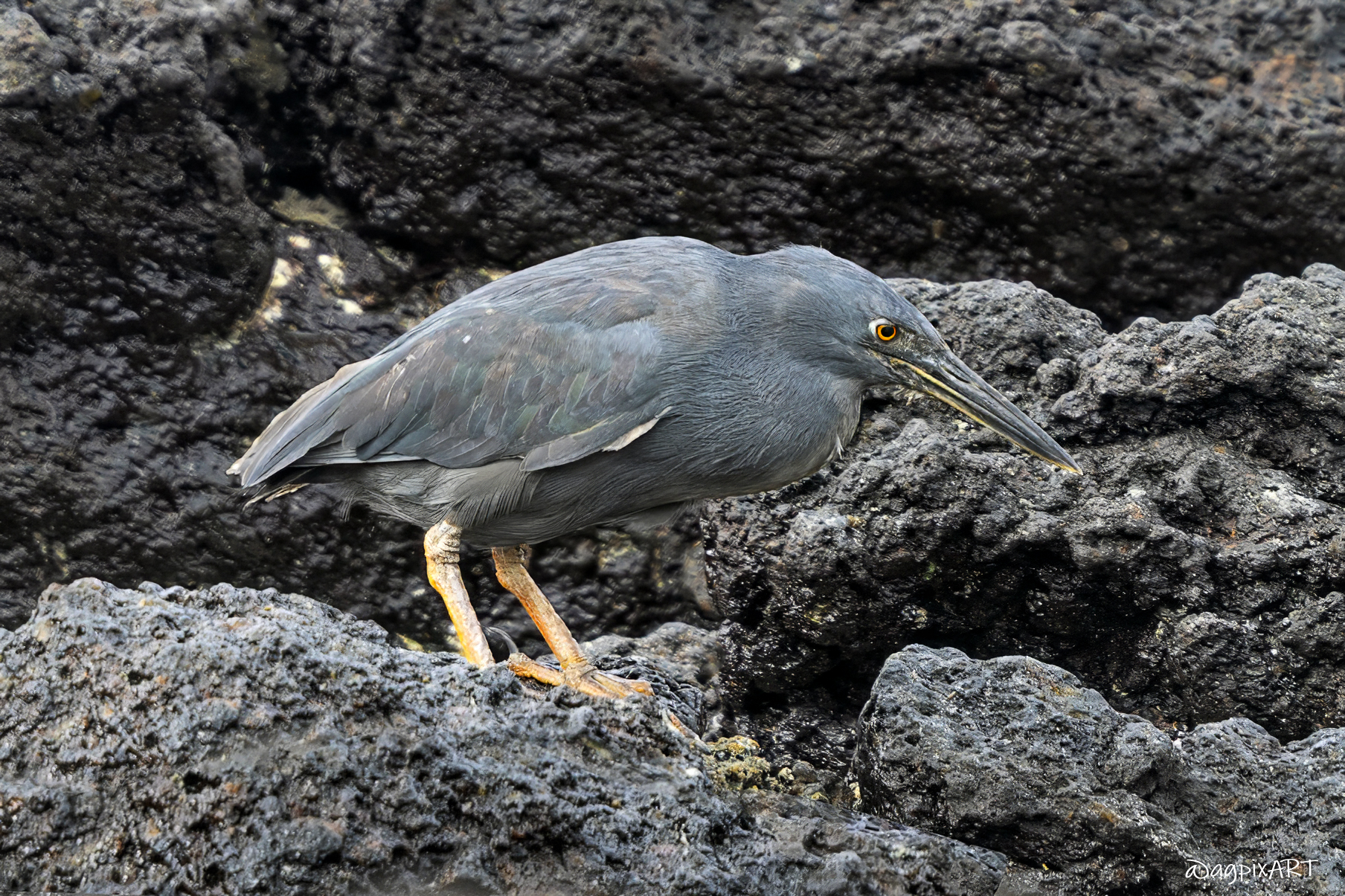
Lava Herons
The Lava Heron (Butorides sundevalli), also known as the Galapagos Striated Heron, is a bird species endemic to the Galapagos Islands. This petite heron, averaging just 2.1 kg in weight and 35 cm in height, is notably small for its kind, with males slightly larger than females. Its uniform gray plumage serves as effective camouflage, blending seamlessly with the dark gray and black basalt lava rocks along the shores where it hunts. Distinctive features include a short crest atop its head, striking yellow-orange eyes, and long, slender legs. Juvenile Lava Herons are identifiable by their brown plumage. These herons are monogamous, pairing with a single mate for each breeding season, though they may choose a new partner in subsequent seasons.
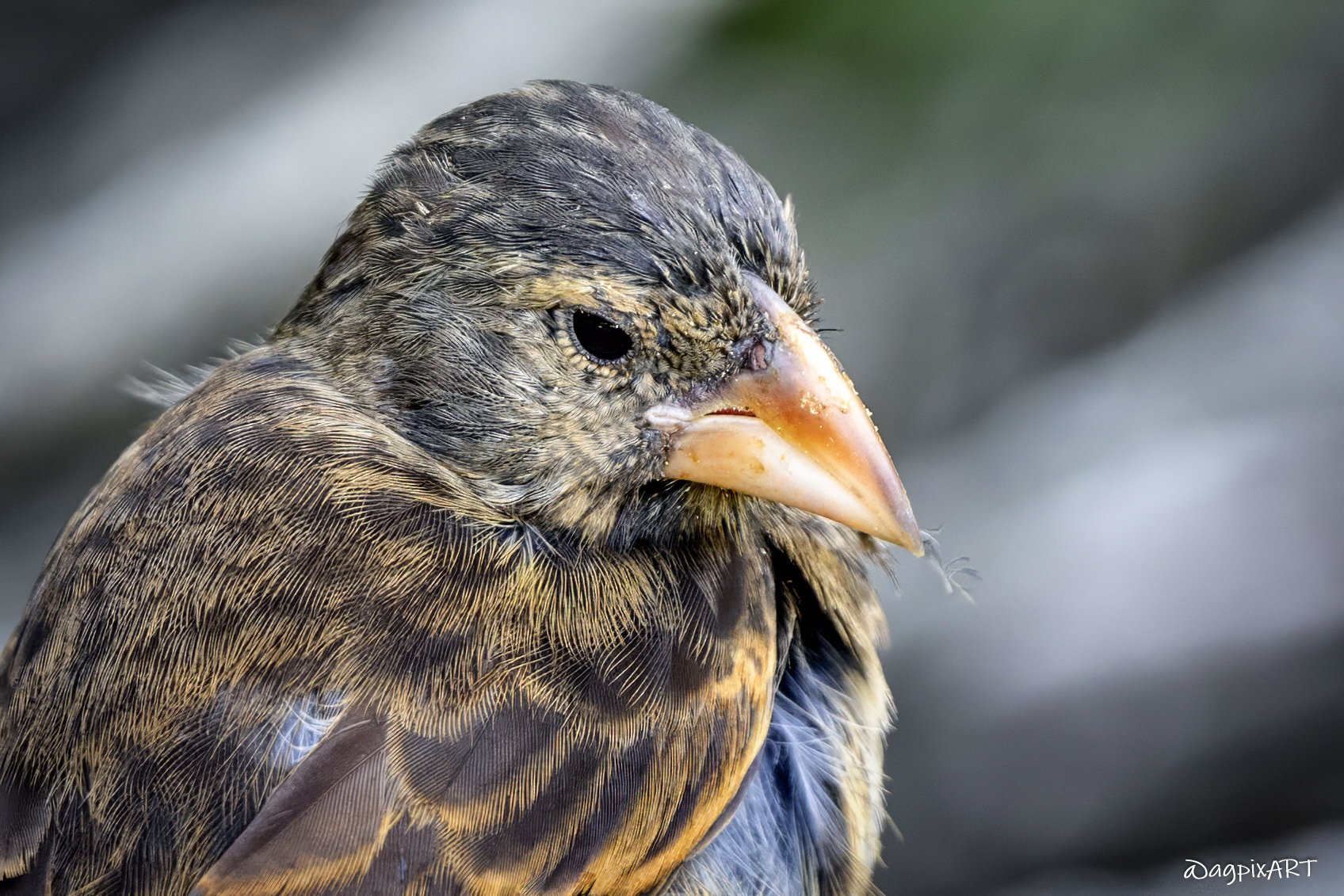
Genovesa Cactus Finches
The Genovesa Cactus Finch (Geospiza propinqua), a member of Darwin’s finches, is specifically endemic to Genovesa Island. Adult males sport a sooty-black plumage, while females exhibit brown feathers with paler, gray-streaked underparts. The bill of breeding males is solid black, in contrast with the yellow or orange markings on the bills of females and non-breeding males.
They feed on Opuntia cactus pulp, flowers, fruits, and nectar, supplementing its diet with insects and seeds. Monogamous pairs defend small territories year-round, with breeding peaking from January to May. Males attract mates with a buzzy, rolling song and construct dome-shaped nests from dry grasses in cacti or shrubs.
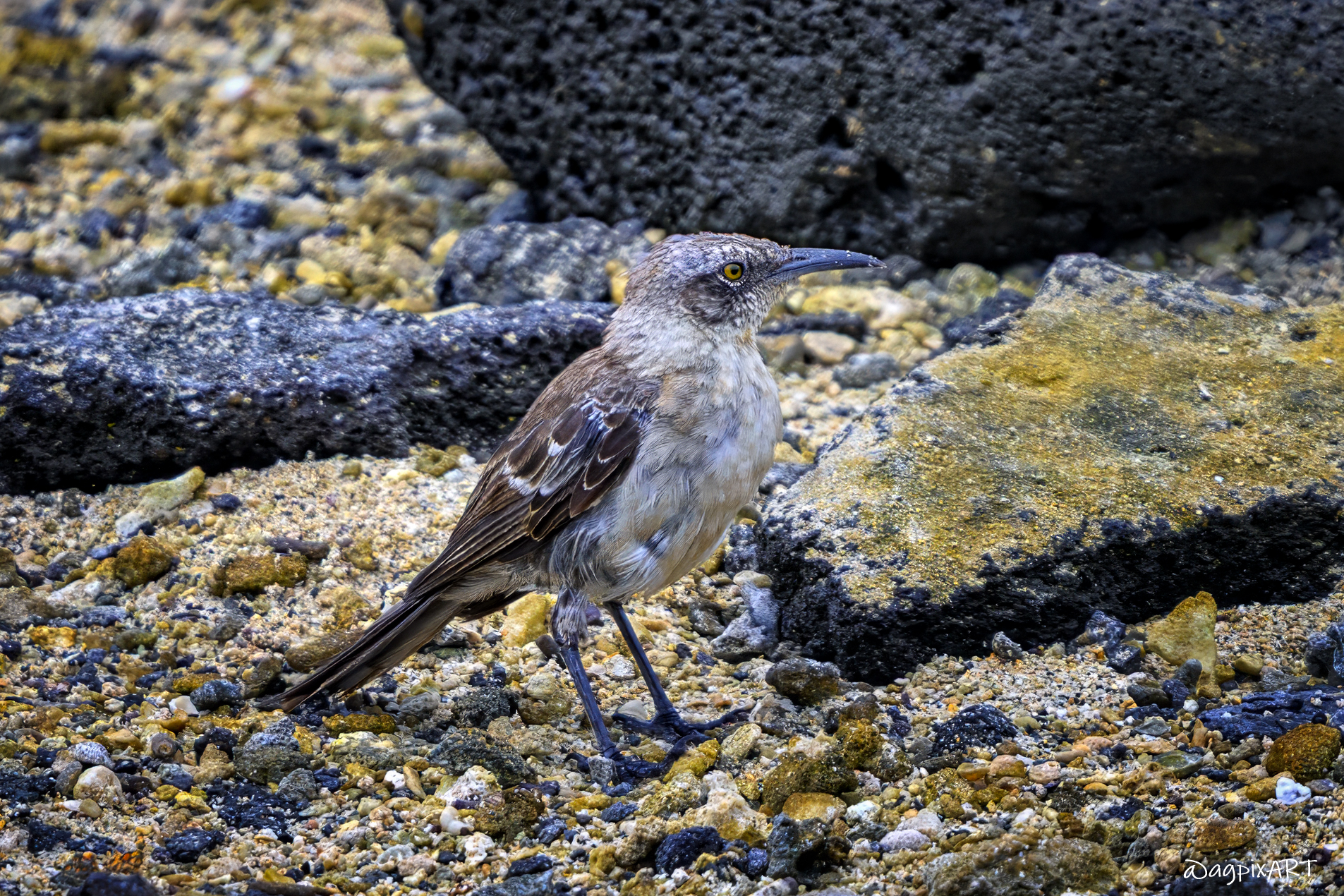
Galapagos Mockingbirds
(Mimus bauri) is one of four endemic mockingbird species in the Galapagos, uniquely adapted to Genovesa’s arid, cactus-dominated landscape. It is a small, grayish-brown bird known for its curious behavior and complex vocalizations, often mimicking other species. Their strong wings allow agile maneuvers to chase insects or evade predators like short-eared owls. Unlike most birds, Genovesa mockingbirds often live in cooperative family groups where younger siblings help raise new chicks, a rare social behavior that boosts survival in their harsh environment. They build simple twig nests in cacti or low shrubs, often reusing them across seasons, and both parents share incubation duties for about 12–14 days.
Genovesa – Attractions, Info & Map
Instructions for photo proofing and comments:
Left-click on the photo to access options for title information (i), leave comment, or mark the photo(s) as the favorite. The option to submit the selected as favorite photos is under “Submit proofs” button under photo gallery.
